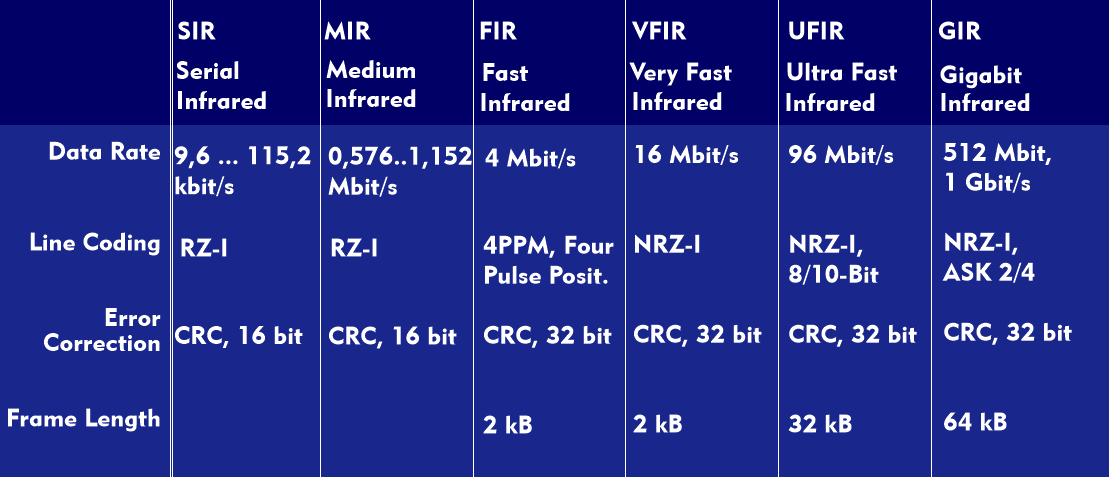giga infrared (IrDA) (GIR)
The physical layer defined by the Infrared Data Association( IrDA), IrDA Physical Layer( IrPHY), supports the different IrDA versions for Fast Infrared ( FIR), Very Fast Infrared( VFIR), Ultra Fast Infrared ( UFIR) and Giga Infrared ( GIR).
The data rates, encodings, and resampling of FIR, VFIR, UFIR, and GIR differ considerably. The fastest implementation is Giga Infrared (GIR) with data rates of 512 Mbit/s and 1 Gbit/s.
The high data rates of GIR are achieved with Amplitude Shift Keying( ASK), using 8B/10B and Non Return to Zero Inverted( NRZ-I) as encodings. Like Ultra Fast Infrared (UFIR), Giga-Infrared uses a Cyclic Redundancy Checksum(CRC) of 32 bits, but has a maximum frame length of 64 kB.
The IrDA Link Access Protocol ( IrLAP) resides on the link layer above the physical layer and the IrDA Link Management Protocol( IrLMP) on the network layer.

